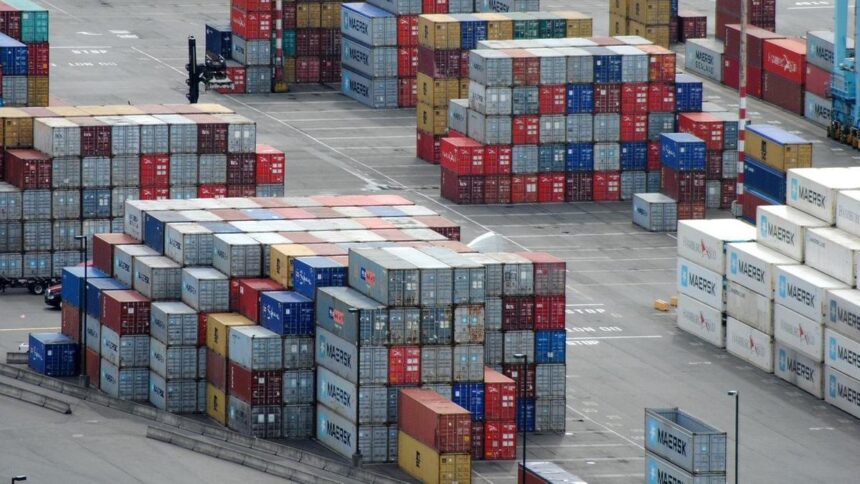With US exports declining, Canada expands trade relationships globally to offset tariff impacts.
Canada’s trade with the United States has seen a notable decline, as the country’s export activity surges in other parts of the world. The latest data from Statistics Canada, released on Tuesday, reveals a reduction in both imports and exports with the US, signalling a growing divide between the two longstanding trade partners amidst rising trade tensions.
US Trade Drops Amid Growing Discontent
Canada’s exports to the US dropped by 6.6% in March, while imports from its southern neighbour fell by 2.9%. The decline in trade with the US is attributed to increasing public dissatisfaction over US policies, particularly regarding tariffs and trade relations, which have become a focal point in recent months.
Overall, Canada’s total exports experienced a slight decrease of 0.2%, primarily due to lower commodity prices, while imports fell more sharply by 1.5%. This marks a notable shift in Canada’s trade patterns, highlighting the nation’s efforts to diversify its global trading relationships.
Trade Deficit Narrowed, Surplus with US Shrinks
Despite the downturn in trade with the US, Canada’s overall trade deficit narrowed considerably from 1 billion Canadian dollars (US$1.4 billion) in February to 367 million Canadian dollars (US$506 million) in March. This improvement was largely due to a significant rise in exports to countries beyond the US.
However, Canada’s trade surplus with the US shrank to 6.1 billion Canadian dollars (US$8.4 billion) in March, marking a noticeable drop from previous months. The data reveals that Canada’s reliance on the US as a trading partner continues to be under pressure as both exports and imports with the US fall.
Read More:
Global Trade Expansion as Exports Surge
The trade data reveals a promising shift in Canada’s global trade portfolio, with a dramatic 24.8% surge in exports to other nations. Canada has successfully expanded its trading relationships with countries such as the United Kingdom, the Netherlands, and Germany, as exports of gold to the UK, crude oil to the Netherlands, and various goods to Germany increased significantly.
Canada’s automotive exports also saw a boost, particularly in light of US tariffs targeting the Canadian auto sector. Despite facing challenges, the export of motor vehicles and parts has continued to rise. However, the impact of the US tariffs was felt across other sectors, with exports of pharmaceuticals, uranium, and pork to the US seeing a decline. Similarly, natural gas exports and steel exports also fell, while aluminium exports rose for the fourth consecutive month.
Steel and Aluminium Tariffs: A Continued Challenge
The ongoing US-imposed tariffs have had a mixed impact on Canadian trade. While imports of steel declined, aluminium imports increased, as both products remain subject to the 25% tariffs imposed by the US. Analysts have cautioned that the full impact of these tariffs has yet to be realized, with the trade conflict expected to worsen over the coming quarters.
Marc Ercolao, an analyst at TD Economics, warned that Canada should brace for further challenges in trade, with increasing headwinds from the US. “The worst of the trade conflict is expected to take place over the coming quarters,” Ercolao stated in a recent research note, signaling that the trade war between the two countries could intensify.
Carney and Trump Meet Amid Rising Tensions
The release of these trade figures coincided with a significant diplomatic meeting in Washington, DC, between Canadian Prime Minister Mark Carney and US President Donald Trump. The two leaders discussed the strained relationship between the two nations, particularly regarding trade and security issues.
Prime Minister Carney, who won last week’s elections on a platform of challenging Trump’s “America First” agenda, expressed that the relationship between the two countries would never be the same. Carney’s government has faced the challenge of managing trade tensions, especially after the US imposed broad tariffs on Canadian goods earlier this year. While certain tariffs were reduced or exempted, many key tariffs, including those on cars, steel, aluminium, and potash, remain in place.
Canada Responds with Countermeasures
In response to the US tariffs, Canada has implemented countermeasures, aiming to protect its industries and maintain its economic stability. “Canada and the United States are strongest when we work together – and that work starts now,” Prime Minister Carney emphasized on social media as he arrived in Washington for his meeting with President Trump.
As the trade war between the two countries continues to unfold, Canada is seeking new markets and building stronger trade ties with countries around the world, positioning itself to weather the economic storm and reduce its dependency on the US.
Conclusion
With a decline in trade with its primary partner, the US, Canada’s trade landscape is undergoing a significant transformation. As global exports rise and new markets open, Canada is diversifying its trade relationships to mitigate the effects of the ongoing tariffs and trade conflicts. However, with the US trade war expected to escalate, the coming months will be crucial for Canada’s economic resilience and its ability to navigate the shifting global trade environment.
Follow 10X Times for more business news.






